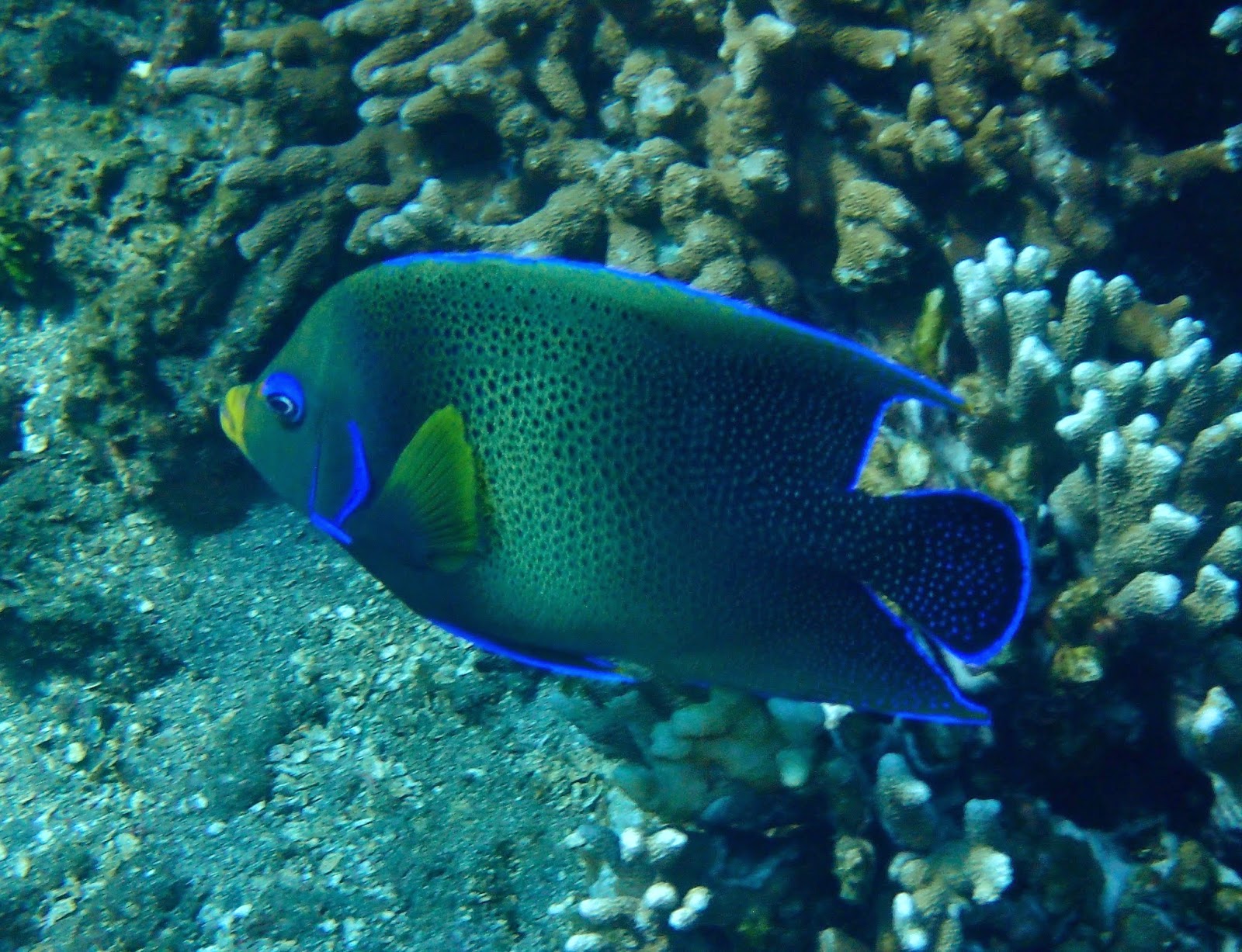As expected, the water was cool and very clear. As we swam out to the palace, there were relatively few fish, but we were enjoying swimming together so it didn't seem to matter. W swam seaward from the last
 | |
| Sea Slug Photographed from about ten feet |
I dove down and got a picture. As I surfaced, Sandra called me over to look at a flounder, which we watched for a minute or so. Turning back to our find, I was surprised to see that in that short time it had moved about five feet. Not only that, but contrary to what I had assumed only a minute or so before, my time for documenting this mollusc (for it had to be either a snail or a nudibranch) was going to be limited, as he was headed for the shelter of a coral head.
I dove deep twice, getting within about four feet of this motivated critter. After I surfaced for the last time, we watched him disappear under the coral head. A small discussion ensued as we passed the camera back and forth looking at our photographic evidence. I was pretty sure that this was a nudibranch as we could
 |
| Platydoris formosa Kailua Kona 25 ft 2014 |
My experience with living nudibranchs began as a teenager, when I saw a colony living in Neatarts Bay near Tillamook, Oregon. This group disappeared a year following my discovery. Since then, my experience has been sadly small, running to four or five nudibranch species in than Sea of Cortez, one or two in the Carribean, three in Indonesia and only two in Hawaii.. Six years ago we saw Julianna's Sea Hare among the rocks at Pahoehoe Beach Park after a rain. And that was my last Hawaiian sea slug sighting. The sea hare was an amazing animal, almost four inches in length. Among all my other nudibranch sightings, I had seen animals no larger than my thumb, both in width a length. This creature was five inches long and at least two inches wide.
As a point of explanation, my sea slug experience has been limited by three factors. First, I don't dive. Second, I rarely snorkel at night. And third, I am limited to sites that can be reached from a shore entry. Suffice it to say, while I have found nudibranchs interesting, my experience is pathetically small and doomed to remain so.
Back at the ranch, I worked on improving our photograph while Sandra perused the World Wide Web. She hit pay dirt in a website published by Cory Pittman and Pauline Fiene. Cory is a naturalist based in Washington State while Pauline works as a dive guide on Maui. They are both serious scientists and have species of nudibranchs named in their honor. Talk about living the dream. Their website is amazing and I invite you to pause to take a look:
http://seaslugsofhawaii.com/
 |
| Platydoris formosa from Seaslugs of Hawai'i |
If you look through their thumbs and descriptions, you will see that there are plenty of larger sea slugs. I actually like my picture pretty well. It provides a good look at the rhinophores (chemical receptors which many of us might refer to as antennae) and the gills. I think both look like a reticulated membrane as opposed to single projections. As contact information was included, I sent both Pittman and Fiene my two pictures and some field notes, including my best guess as to identification. Cory wrote back in less than 24 hours. In a laconic note, he verified that this was Platydoris formosa, which was my best guess based on their wonderful website. I hope you enjoy my pictures and perhaps you can try your hand using the Pittman/Fiene website. I'm certain that you will find their pictures and descriptions enlightening.
jeff
 |
| Julianna's Sea Hare, Larry Basch, National Park Service |


















































